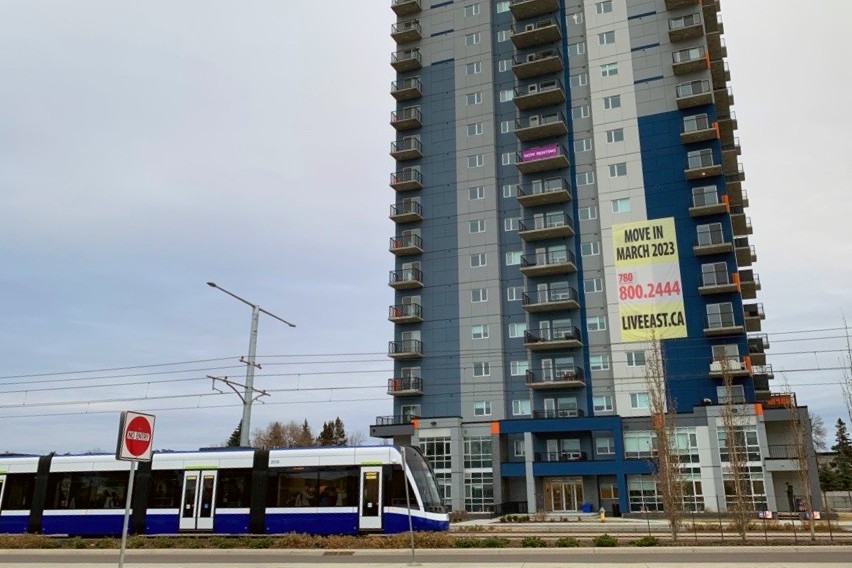
As Ottawa pushes for density near transit, research shows Edmonton has challenges
The federal government's recent push for cities to change rules that have limited dense housing near high-frequency transit has underlined new research, which shows Edmonton has not added population in many of these areas for decades.
On April 2, the Prime Minister's Office announced that to access a public transit fund Ottawa will introduce in the 2024 federal budget, municipalities must "take action that will directly unlock housing supply." Those actions include allowing high-density housing within 800 metres of high-frequency transit lines and post-secondary institutions.
The impetus is a desperate housing shortage across Canada. The Canadian Mortgage and Housing Corporation projects the country needs to build 3.5 million additional homes by the end of the decade to restore affordability. Meanwhile, recent stats suggest Edmonton's housing starts were down 10% in 2023 as compared to 2022. The city was one of the fastest growing in Canada between 2016 and 2021. More than 100,000 people have moved to Edmonton since then and another 100,000 are expected in the next three years.
But despite this, new research suggests Edmonton has not added density on land that housing advocates say is most suited for density, and that new policies in the works may not fully fix that.
Jacob Dawang, a data scientist and a co-organizer of Grow Together Edmonton, has analyzed an 800-metre radius around 48 current and future LRT stations. Dawang also analyzed the city's draft district plans, which are meant to guide development as Edmonton grows to 1.25 million people. He found that population growth has been stagnant or even fallen within the proximity of nearly half the city's LRT stations, and that the forthcoming district plans don't specifically encourage increasing density near some of these stations.
Indeed, Dawang's analysis shows that between 2001 and 2021, the population grew by 10% or less near several stops, including the Meadowlark, Grovenor/142 Street, Glenora, Stony Plain Road/149 Street, Bonnie Doon, and Jasper Place LRT stops. His research also shows that, over the same period, the population has fallen near more than a dozen stops, including the Aldergrove/Belmead, Glenwood/Sherwood, and Millbourne/Woodvale stops. "There are a lot of stations in residential areas that have grown very little over the past 20 years," he said.
The findings are concerning, Dawang said, given Edmonton's increasing population. "We're growing at a super-fast rate … so we have to be ready. We have to be making these tough choices, and there will be growing pains, but these are really the tough choices and the tough discussions that we need to have if we're going to be growing by that much."
Dawang added that the city should maximize the return on the public dollars it has spent building high-frequency transit. "You have to remember that these are billion-dollar investments that we're putting into the LRT line. It's not someone's personal LRT line to take downtown. We really should be making the best use of these investments as possible."





